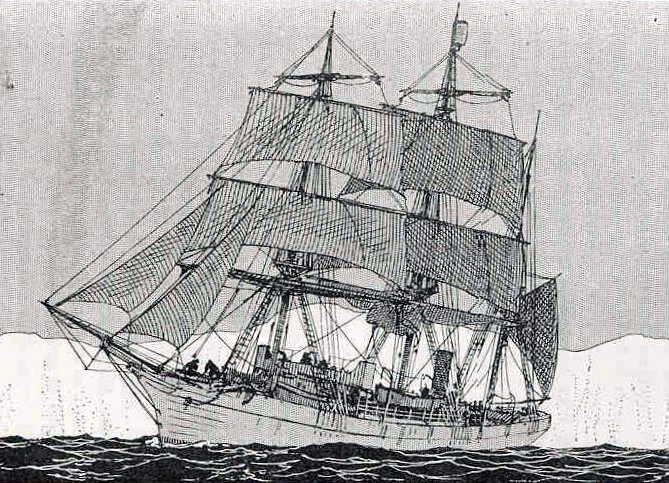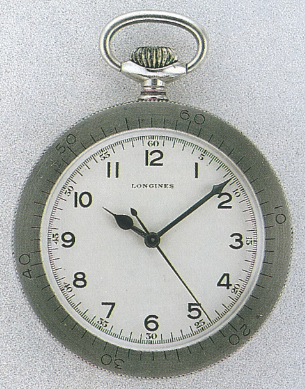Paul-Émile Victor, Polar Explorer and, a member of the Longines Honor Roll, born on June 28th 1907, dedicated his life to polar exploration and ethnology.

Through immersing himself in native Inuit culture he was able to shed some light upon their customs, living habits and language. Victor spent five decades exploring and documenting the polar wilderness.
While crucial in the sphere of cultural studies and anthropology; his dedicated work enabled future polar expeditions to traverse the icy deserts with greater insight, technique and therefore safety.

In later life he tirelessly campaigned for the preservation of Inuit culture on native land. As the previously untouched Arctic expanses became infiltrated with explorers, soldiers and government expeditions, Victor acted as their ambassador; translating the wishes of Inuit people to the rest of the world.
Greenland
Victor embarked on his first polar expedition in 1934 in conjunction with the Ethnography Museum of Trocadero, Paris.
Accompanying Victor on the Pourquio-Pas? (Why Not?) were the famous polar explorer Jean-Baptiste Charcot, anthropologist Robert Gessain, geologist Michel Perez and filmmaker Fred Matter-Stevenier.
They settled on Ammassalik, on the East coast of Greenland, with the Inuit population. Within just 1 year, each of the team were able to speak the mother tongue.
Victor was awed and inspired by a culture so different to his own. He took meticulous notes and sketches in order to communicate his findings upon return.
In 1935, Victor is praised for this work. In France, he holds numerous conferences and publishes articles on his polar adventure. The publicity garnered from this allowed him to cross Greenland on sled and dog in 1936.

From West to East Victor, Robert Gessain Michel Perez and Eigil Knuth cross the icy expanse, armed with all the knowledge and technique awarded to them by the Inuit people.
The group spend 14 months in Kangerlussuatsiaq with an Inuit family “comme un Eskimo parmi les Eskimos” (as an Eskimo among Eskimos)[1]
Victor continually found himself at home with the Inuit population.
Victor wrote to Longines about the Longines chronometers used during the trek across Greenland.
‘I fondly remember the three Longines chronometers I took with me to calculate longitude during our crossing of the Greenland ice desert in 1936.
They were the difference between failure and success’.
Upon return his ethnology studies became incredibly popular. The nation were fascinated by Victor’s notes and drawings.

This traditional Greenlandic culture, organized around the seal, lived far more communally than their western counterparts.
Embracing their natural surroundings and working in tandem with both each other and their environment, they stood at odds with a society rapidly expanding into strange advanced technologies; wholly dependent on capitalist systems.
Victor went on to demonstrate pole transportation techniques with dog and sled in 1938. He was able to showcase the capability of dog and sled against extreme weather conditions.
Victor proved that the tried and tested Inuit methods were more effective than mechanical snow vehicles. His extensive ethnology study continued throughout 1939 in Lapland.
World War II
Victor was drafted into the French Navy at the outbreak of WWII. After completing his service Victor traveled to the United States in July 1941.
In 1942 he enlisted with the US air force as a lieutenant instructor pilot and skydiver. He later leads the ‘Search and Rescue’ squadron with the aim of retrieving pilots lost in the Arctic wilderness.
In February, 1947 Paul-Émile Victor creates the ‘French Polar Expeditions’ to expand upon scientific research in the Polar Regions.
‘Working in tandem with international scientists, the organization studied Antarctic birds, analysed the relationship between oceans and the atmosphere and set up polar study camps.’[2]
From 1947 to 1976 150 expeditions are conducted, with seventeen of them personally directed by Victor himself.

Within this time he became head of the International Glaciological Shipping Greenland, Chairman of the Scientific Committee on Antarctic Research and chairman of the French Antarctic Committee for the International Geophysical Year.
In later life Victor became deeply concerned with environmental conservation and was appointed CEO of the Foundation for the Conservation of Nature in 1968.
He dedicated the rest of his life to conservation and campaigned to protect the environment and people of the vast polar expanses he’d traversed.
He often spoke out on behalf of the Inuit people at world forums and created the Group Paul-Emile Victor association in 1974. This group concerned itself with the protection of man and his environment.
‘From his first visit to Greenland in 1934 to his last visit to Antarctica in 1987, he covered almost 312,000 miles over ice and snow.’[3]
Paul-Émile Victor, an incredible individual, broadened our understanding of the Arctic landscape and paved the way for future explorers to venture into the frosty polar expanse.
Footnotes
- Paul-Émile Victor, Chiens de traîneaux : Compagnons du risqué, (Flammarion, 11 March 2015).
- New York Times, Paul-Emile Victor, 87, Explorer Who Wrote About Polar Regions, (NY Times, March 9, 1995), pp. 1. http://www.nytimes.com/1995/03/09/obituaries/paul-emile-victor-87-explorer-who-wrote-about-polar-regions.html (date accessed: 17/08/16).
- New York Times, Paul-Emile Victor, 87, Explorer Who Wrote About Polar Regions, (NY Times, March 9, 1995), pp. 1. http://www.nytimes.com/1995/03/09/obituaries/paul-emile-victor-87-explorer-who-wrote-about-polar-regions.html (date accessed: 17/08/16).
Bibliography
New York Times, Paul-Emile Victor, 87, Explorer Who Wrote About Polar Regions, (NY Times, March 9, 1995), pp. 1. http://www.nytimes.com/1995/03/09/obituaries/paul-emile-victor-87-explorer-who-wrote-about-polar-regions.html (date accessed: 17/08/16).
Victor, Paul-Émile. Chiens de traîneaux: Compagnons du risqué, (Flammarion, 11 March 2015).
